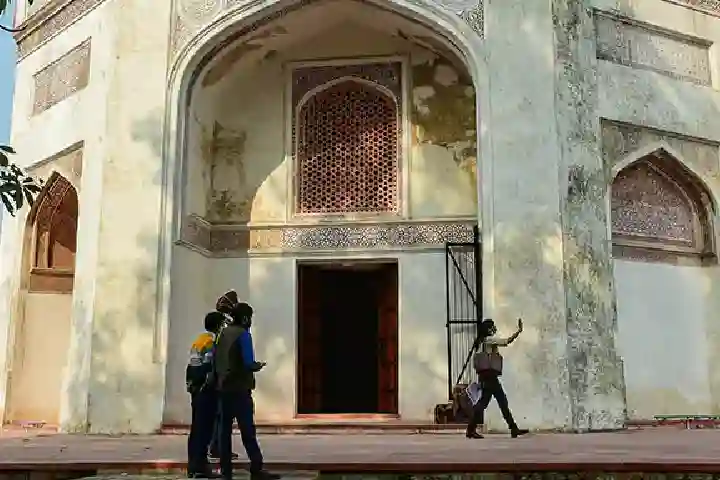Known for its historic monuments, Delhi got a fillip as conservation of the 16th Century Mughal-era Sabz Burj was completed after about four years and interestingly during this process an intricate painting on the ceiling came to light.
This double-domed structure which belongs to the early Mughal period is said to be that of a noble Mughal and is located opposite the UNESCO Heritage Site of Humayun’s Tomb which it predates.
The conservation work of this 70-foot-tall octagonal tomb which is protected by the Archaeological Survey of India, involved use of traditional craftsmanship and high-tech scanning and was carried out by the Aga Khan Trust for Culture (AKTC) and ASI with financial backing from a corporate firm.
Talking about this work, Ratish Nanda, CEO of AKTC said: "Ahead of the World Heritage Week starting November 19, the conservation work has been completed, and the early Mughal-era monument will be lit up thanks to our corporate partner Havells, which besides contributing funds, will also illuminate the site, which will surely draw many people to admire it, who otherwise just pass by it.”
Originally expected to be completed in a period of 18 months, the conservation work got stretched by the discovery of the painted ceiling in the 25-ft high domed chamber besides other factors.
Elaborating on this, Nanda observed: "We were aware that an intricate painting lay hidden beneath layers of plasters and cement that had been added in the past. But, it was in early 2019 that closer inspection on scaffolding by art conservators revealed an intricately painted ceiling. And, it blew us. We had not anticipated that the artwork will be this rare and complex, and that stretched our project timeline.”
The painted ceiling has floral patterns and motifs which were identified later to have been painted with real gold and lapis lazuli. The myriad patterns on the ceiling were in blue, red and gold. Nanda explaining the significance of this painting said: "The painting done by hand makes the monument even more special, as also one of the earliest surviving painted ceiling for any Mughal or Islamic monument in India.”
The Sabz Burj was built in the 1530s and in the early 20th Century it was put under ASI.




















